You are currently viewing a beta version of our website. If you spot anything unusual, kindly let us know.
Preprint
Article
The Info-Geometric Analysis of Wind Speed Dynamics and How Energy Is Influentially Impacted by Information Geometry (IG)
Altmetrics
Downloads
73
Views
18
Comments
0
This version is not peer-reviewed
Abstract
This paper discusses how mathematical models are used to predict environmental conditions. While these models are successful for larger scale phenomena, it becomes more complex for local weather or wave processes. Several approaches have been proposed to address this problem, including neural networks and statistical and mathematical models. The novelty in this approach is the use of statistical manifolds, which provide a more accurate way to estimate distances and cost functions. This work focuses on advancements in differential and information geometry for creating different types of models that can be used for environmental simulation and forecasting. These fields are vital for many institutes and centres worldwide, as they help solve challenges in areas such as meteorology, renewable energy, and aviation safety. Some potential IG applications to advance energy were given. Closing remarks with new open problems combined with the next research phase are provided.
Keywords:
Subject: Computer Science and Mathematics - Applied Mathematics
I. Introduction
IG is a branch of differential geometry focused on using non-Euclidean geometry for probability theory and stochastic processes. It provides a geometrical background for studying large data sets and probability distributions and defining distances between them. This approach allows for the avoidance of traditional least square methods and instead uses a complete differential geometry background, within which statistical data sets are analyzed using mathematical concepts. These data sets are compared to mathematical models called "statistical distributions" which are finite dimensional manifolds. A Riemannian geometry framework is then applied to these manifolds to estimate distances between points of interest. The corresponding geodesics, or shortest paths, are used to connect these points [1]. More interestingly, IG statistical manifolds (SMs) parametrization is visualized by Figure 1.
The study uses information geometry (IG) analysis to improve the accuracy of weather prediction models, specifically for wind speed forecasts. The Gamma distribution, a statistical model for wind speed, is used to categorize wind speed forecasts within a two-dimensional statistical manifold. Wind speed forecasts are important for various applications, including aviation, navigation, and renewable energy.
Wind speed probability distribution functions (PDFs) were analysed [3] to determine their usefulness in describing different wind regimes and their potential for wind energy. The study[3] introduced new approximation methods for deriving power curves from wind farm data. locations with moderate wind speeds were better served by the Weibull distribution, but locations with low and high wind speeds were better served by the gamma distribution. As seen in Figure 2, no location proved a good fit for the Rayleigh function.
As the wind power business expands into areas with different wind regimes, the results emphasize how important it is to choose a suitable distribution function for determining the wind speed frequency distribution.
Our paper is organized as follows: Section II contains the necessary IG definitions. Section III discusses the latest findings. An overview of prospective IG applications to energy activities is provided in section IV. Section V answers potential upcoming research questions, which would pave the way for a pioneering platform of multiple energy research advancements around the world. As a result, this study's innovative contribution to energy researchers is highlighted. Section VI contains concluding remarks as well as potential study routes intertwined with open research topics.
II. Main IG Definitions
Definition 1.
Statistical Manifold (SM)
is called an SM (c.f., [4]) if x is a random variable in sample space and is the probability density function, with the n-dimensional coordinate system, .
Definition 2.
The potential function, (c.f., definition 1 [4]) reads as the -free component of .
Definition 3.
FIM, or [](c.f., [5]) is determined by:
Definition 4.
FIM’s inverse matrix, , [] is given by :
Definition 5.
-Connection
For each the (or )-connection (c.f.,[5]) is the torsion-free affine connection with components:
where is the potential function.
Definition 6.
The manifold M, GEs are defined by (c.f., [4])
Definition 7.
The best probability distribution to modelling the wind speed(c.f., [3]) is Gamma distribution with PDF:
Notably, Gamma distribution of Equ. (5) is characterized by the statistical inverse rate and shape parameters respectively, provided that
Here respectively define standard deviation of wind speed and mean wind speed.
III. Main Results
Theorem 1.
The WSM satisfies:
(i)FIM is given by:
where
(ii) FIM inverse matrix is
. The determinant of
Such that
are positive real numbers and
Proof
(i)We have (c.f., (5)). Thus,
The potential function is determined by
Thus,
Therefore, the FIM is given by (7)), which proves (i).
(ii) We have,
or. Hence,
Theorem 2.
The IG equations of motion for the WSM parameters takes the form:
with
Proof
It can be verified that
Moreover,
By engaging the derivations (c.f., Eqns (25)-(31)), the proof follows.
IV. IG Applications to Advance Energy
A new method of identifying problems with electric power systems, particularly those with distributed sources was revealed [6]. The method uses a mathematical concept called differential geometry and provides a comprehensive analysis of issues related to such systems. Additionally, the approach uses IG sensitivity analysis of power systems’ Differential-Algebraic Equation (DAE)models.
A novel IG approach for identifying electric power systems that addresses challenges in optimization models was provided[7]. It includes domain-specific tools to regularize these models and is scalable for large systems due to low effective dimensionality in data space. The method is illustrated using synchronous generator example. Figure 3 (c.f., [7]) describes a graphical representation of a complex mathematical model by showing different parameters and the likelihood of their joint occurrence. The red lines on the graph are representative of the shortest path between two points on the model manifold. The text also points out that these lines align with specific regions of the cost surface, which are referred to as "canyons”. Figure 4(c.f., [7]) portrays a visual representation of a model in data space, specifically a two-dimensional cross section. Red lines show the geodesic curves, which are a subset of curves from Figure 3.
More interestingly, a new proposed technique for detecting targets in weather clutter using the IG approach was undertaken [8].
Figure 5 describes the results of comparing two methods used for detecting targets in weather clutter. One method uses the Riemann Distance, which calculates a "mean" for a set of data points, while the other uses the Euclidean Distance, a more traditional method.
Figure 6 supports strong evidence of how well IG target detection works [8], where many simulations (called Monte Carlo experiments) were and plotted in a graph. A comparison between the newly proposed IG technique versus constant false alarm rate (CFAR), the traditional way of detecting things, has shown that their new method performed better.
V. Questions and Open Problems
The current study gives birth to these research questions:
Question 1
Will IG allow information loss in model prediction?
In simpler terms, the model manifold (a way of visualizing the model's predictions) keeps all the information about the model's predictions [9,10], while the cost surface in parameter space (a way of visualizing the model's performance) condenses all the information into a single number - the cost.
Question 2
How well can IG separate the model, i.e., the manifold embedding into data space?
In IG, we can separate the model from the data it is fitting[9,10]. The model can be thought of as a shape embedded in the space of data, while the data is just a point in that space. This abstraction helps us study the properties of the model without being tied to a specific observation. However, the cost surface in parameter space is affected by the observation and can be very sensitive to it.
Question 3
How well can IG support labelling for scientific predictions?
The model manifold is a collection of points that stay the same even if we change the way we represent our model [9,10,11,12]. The model parameters act like coordinates on this manifold, providing labels for specific predictions without changing the underlying structure of the manifold.
Question 4
Is it possible for IG to act as a natural connection between the local and global analysis?
FIM is a way to measure the differences between two models that are just a tiny bit different from each other. This is done using the Riemannian metric on the model manifold[9,10,11,12]. It serves to connect the study of local differences between models to the study of global differences.
Question 5
What is the groundbreaking significance of IG language?
IG is a way of describing mathematical concepts that work well even when there are a lot of variables to keep track of. This is useful because in some areas of research, the number of variables involved can be very high.
Here we overview some potential emerging open problems:
Open problem 1
Having seen the IG is power in modelling. Is it possible to use GEs to replace classical mechanics? In a way, GEs is descriptor of the equations of motion for statistical parameters representing any underlying distribution.
Open problem 2
Is it possible to use IG to analyze the dynamics of time-dependent systems on both macro and micro levels?
Open problem 3
Can the general dynamics of photon states be reinterpreted and geometrically analysed using an IG technique like this one?
Open problem 4
Can new connections be made between the info-geometric analysis of the systems being studied and the Einsteinian Theory of General Relativity (TGR)? This is because IG is tensor-based. Could this be a significant advancement?
Open problem 5
How feasible is it to extend the applicability to Control theory, automotive and Satellite industries. Also, what about the IG role to enhance Electromagnetics, cybersecurity and IoT?
VI. Closing Moments and Next Phase Research
This work is a breakthrough in the field of IG modelling of wind energy since it allows for the geometric analysis of the overall dynamics of several related phenomena, including wind speed forecast and weather prediction models. These collaborations take place within a unified info-geometric platform. Several unresolved issues surface from the novel's beginnings as an unprecedented line of inquiry. The next phase of research involves employing extending the proposed ground-breaking IG approach solving the open problems in section V.
References
- A. Mageed.(2023). Info-Geometric Analysis of Gamma Distribution Manifold with Gamma Distribution Impact to Advance Satellite Earth Observations. The 2nd International Conference on Applied Mathematics, Informatics, and Computing Sciences (AMICS 2023).
- I.A. Mageed, Q.Zhang.(2022). Information Geometry? Exercises de Styles. electronic Journal of Computer Science and Information Technology, 8(1). [CrossRef]
- I. A. Mageed, et al.(2023). Towards a Revolutionary Info-Geometric Control Theory with Potential Applications of Fokker Planck Kolmogorov (FPK) Equation to System Control, Modelling and Simulation. In 2023 28th IEEE International Conference on Automation and Computing (ICAC), pp. 1-6. [CrossRef]
- I.A. Mageed, I. A., et al. (2023, August). Z(a,b)of the Stable Five-Dimensional M/G/1 Queue Manifold Formalism's Info-Geometric Structure with Potential Info-Geometric Applications to Human Computer Collaborations and Digital Twins. In 2023 IEEE 28th International Conference on Automation and Computing (ICAC), pp. 1-6. IEEE. [CrossRef]
- I. A. Mageed, Q. Zhang. (2022). Information Geometry? Exercises de Styles. electronic Journal of Computer Science and Information Technology, 8(1). [CrossRef]
- E.D.C. Gomes,, et al. (2022). Igooed:An information geometry approach to out-of-distribution detection arXiv preprint. arXiv:2203.07798. [CrossRef]
- M.K.Transtrum, et al. (2017). “Information geometry approach to verification of dynamic models in power systems”, IEEE Transactions on Power Systems 33.1, pp. 440-450. [CrossRef]
- H.Sheng, X.Zhang. (2022). Weak Target Detection with Information Geometry in Weather Clutter”, In 2022 2nd IEEE International Conference on Frontiers of Electronics, Information and Computation Technologies (ICFEICT), pp. 77-82. [CrossRef]
- M.K.Transtrum, et al. (2010). Why are nonlinear fits to data so challenging?, Physical Review Letters, vol 104, no 6, pp. 060201. [CrossRef]
- M.K.Transtrum, et al. (2011).Geometry of nonlinear least squares with applications to sloppy models and optimization”,Physical Review E, vol. 83, 036701, 2011. [CrossRef]
- I. A. Mageed, D.D. Kouvatsos. (2021). The Impact of Information Geometry on the Analysis of the Stable M/G/1 Queue Manifold. In ICORES, pp. 153-160.
- S.-I.Amari, et al. (1987).Differential Geometry in Statistical Inference, Springer Lecture Notes-Monograph Series.
Figure 1.
Info-geometric SM’s parametrization (c.f., [2]).
Figure 1.
Info-geometric SM’s parametrization (c.f., [2]).
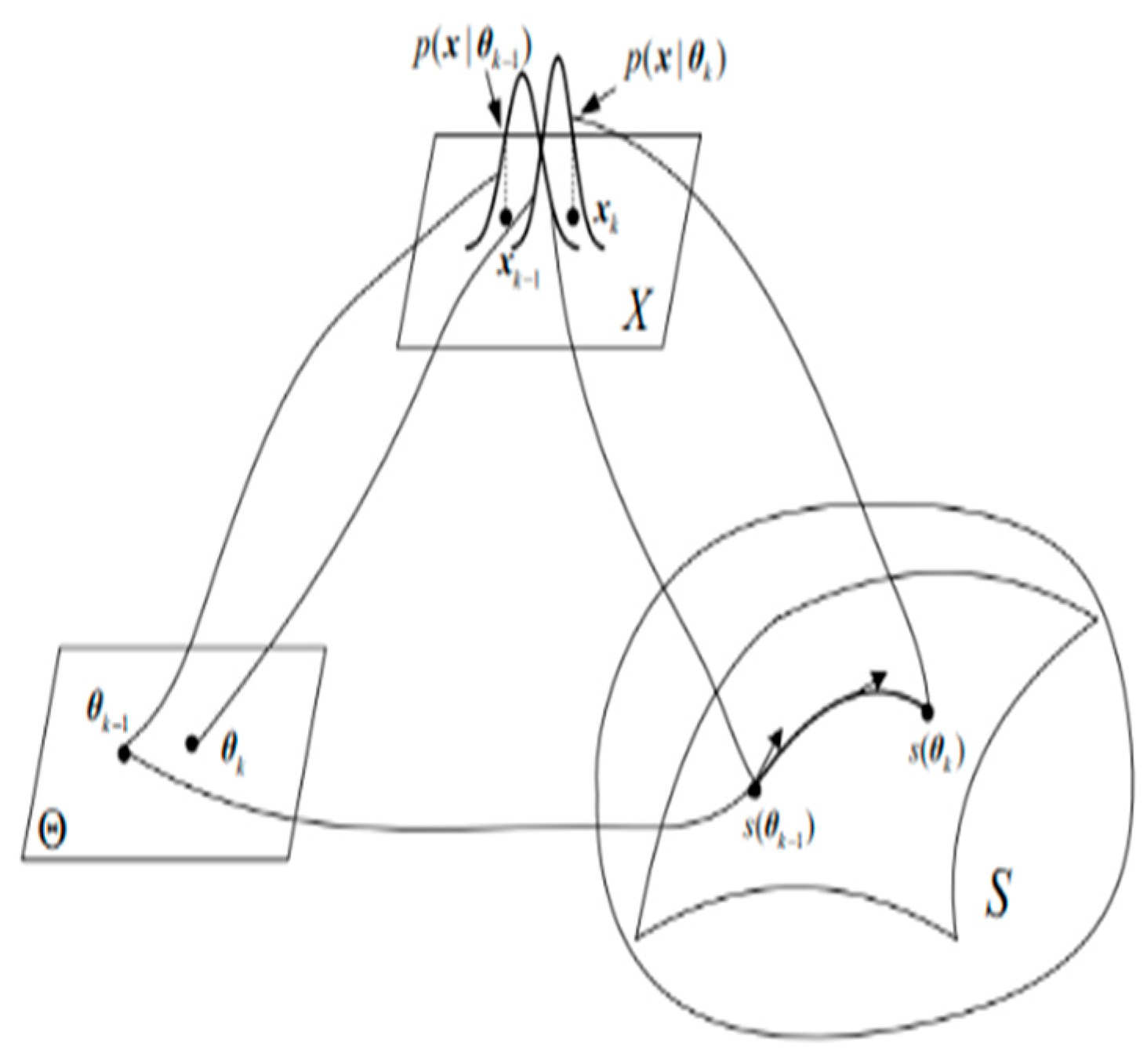
Figure 2.
Dataset histogram using Weibull, Rayleigh, and gamma PDFs [3].
Figure 2.
Dataset histogram using Weibull, Rayleigh, and gamma PDFs [3].
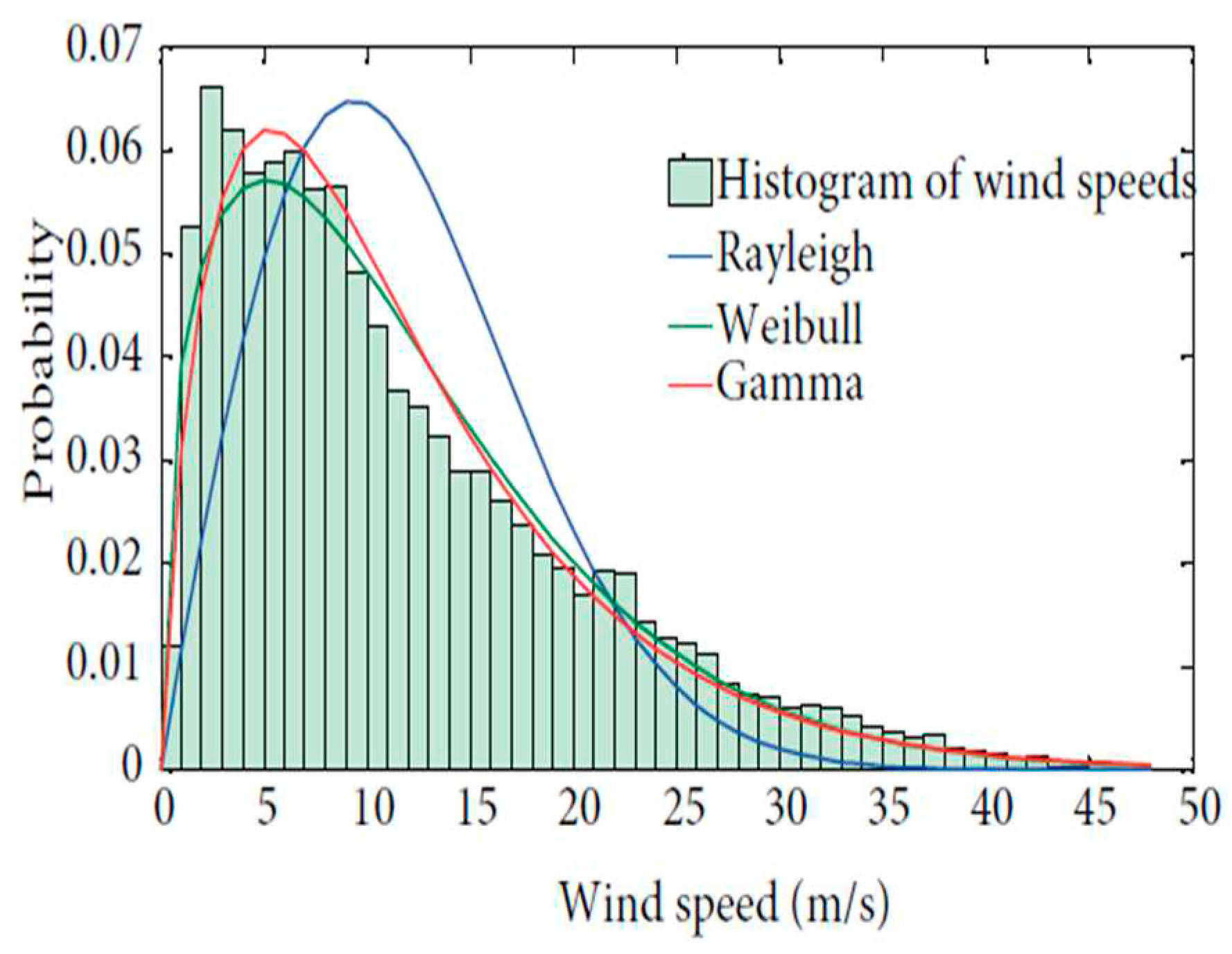
Figure 3.
Global exploration of a two-dimensional cross section of the generated manifold(c.f.,[7]).
Figure 3.
Global exploration of a two-dimensional cross section of the generated manifold(c.f.,[7]).
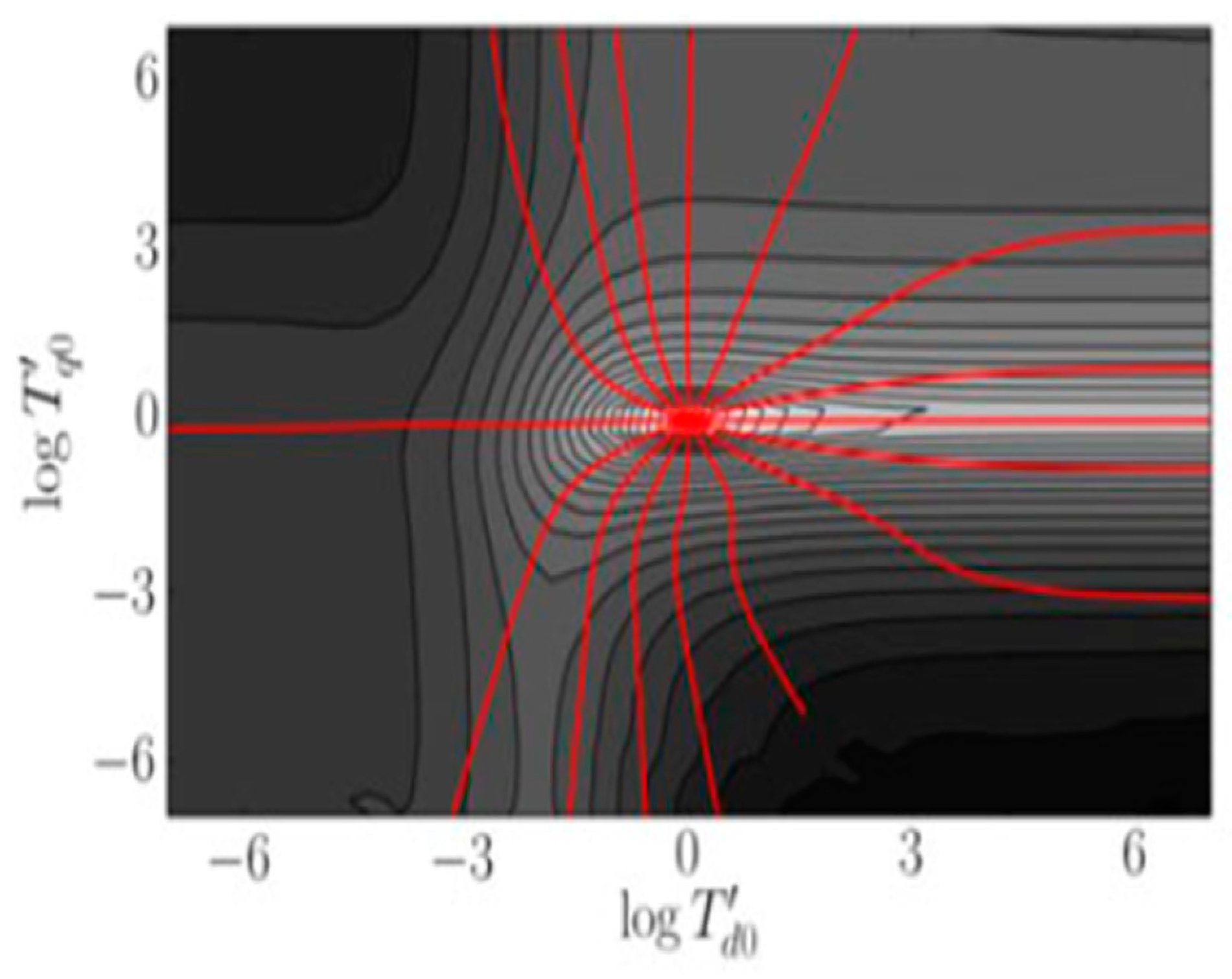
Figure 4.
Data space visualization of the generated manifold(c.f.,[7]).
Figure 4.
Data space visualization of the generated manifold(c.f.,[7]).
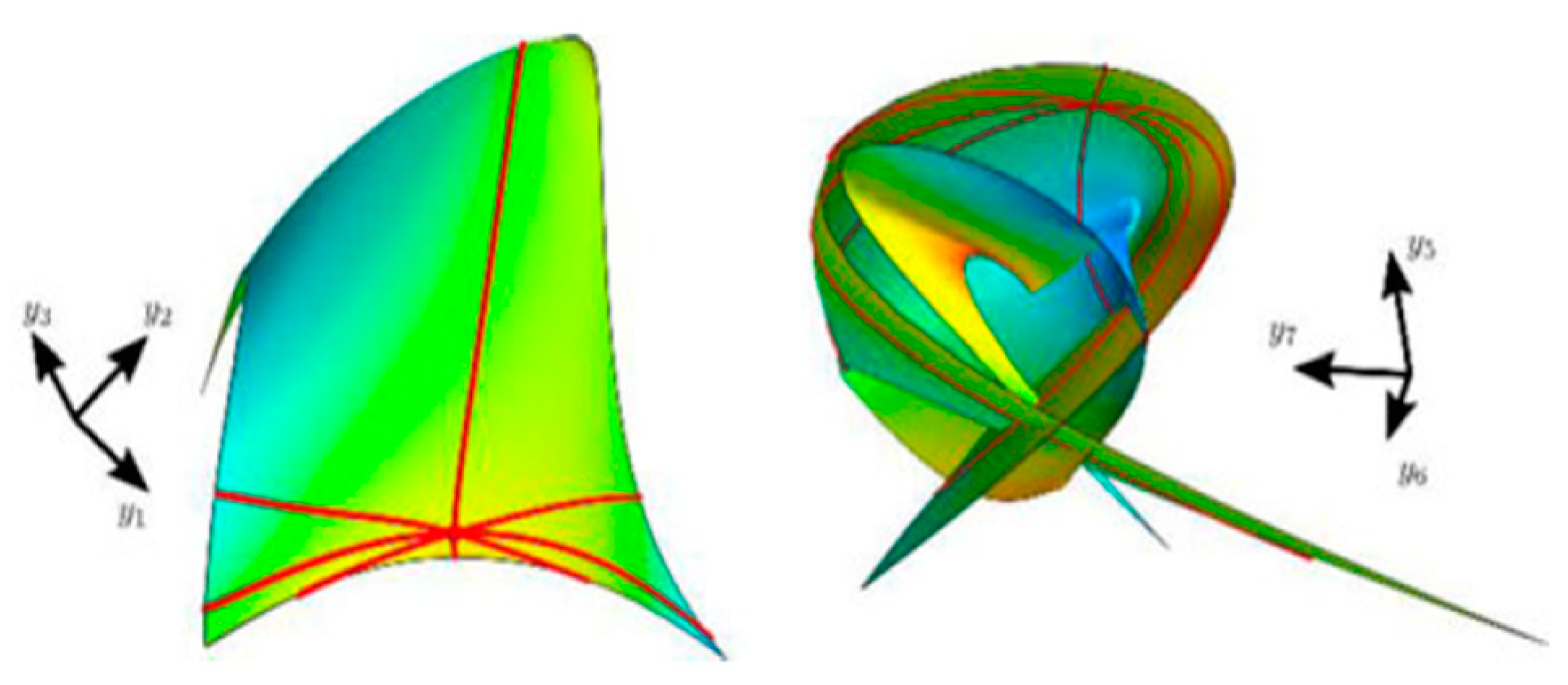
Figure 5.
Target detection findings versus signal to clutter ratio (SCR)(c.f., [8]).
Figure 5.
Target detection findings versus signal to clutter ratio (SCR)(c.f., [8]).
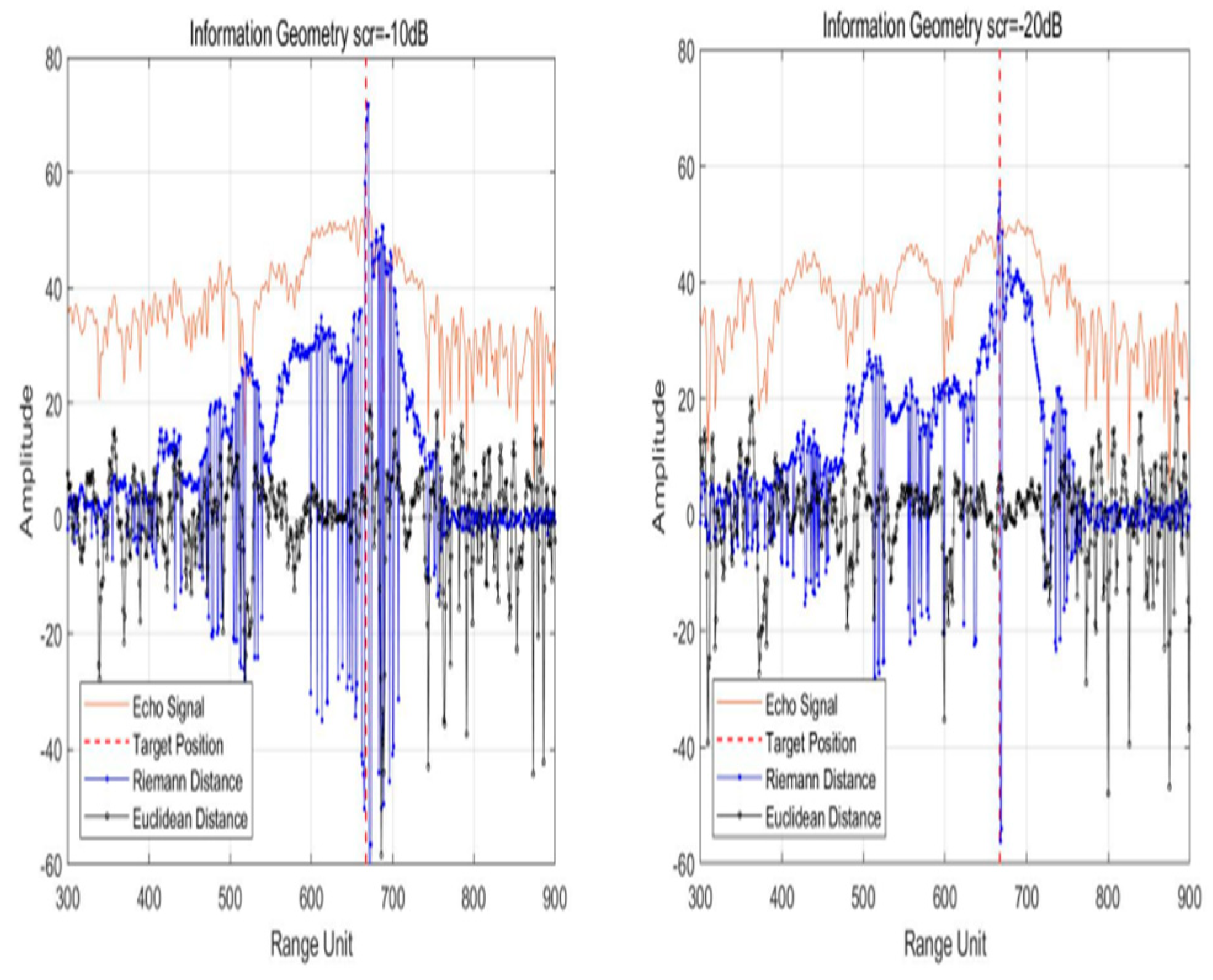
Figure 6.
A comparison between IG approach and traditional CFAR method [8].
Figure 6.
A comparison between IG approach and traditional CFAR method [8].
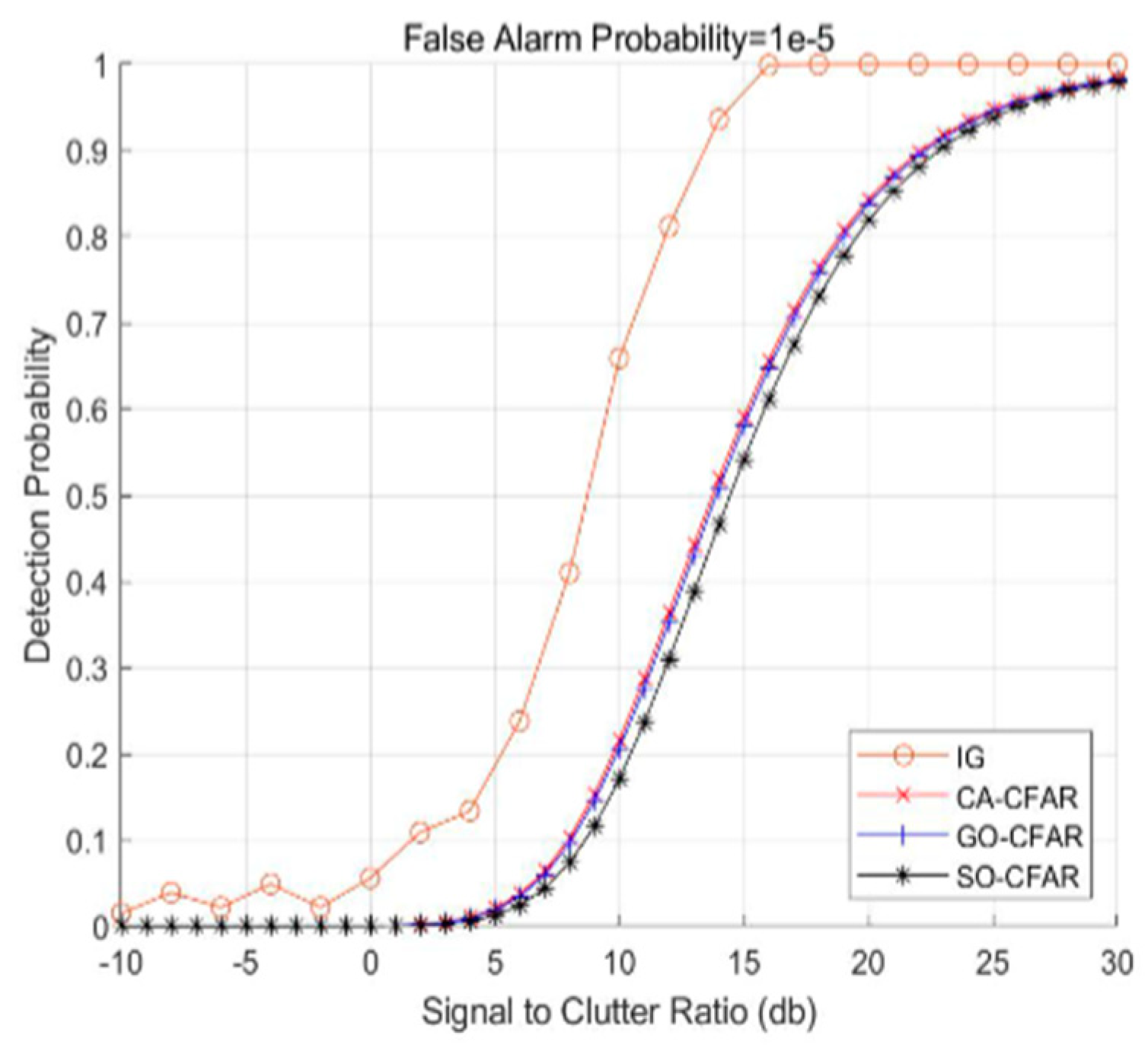
Disclaimer/Publisher’s Note: The statements, opinions and data contained in all publications are solely those of the individual author(s) and contributor(s) and not of MDPI and/or the editor(s). MDPI and/or the editor(s) disclaim responsibility for any injury to people or property resulting from any ideas, methods, instructions or products referred to in the content. |
© 2024 by the authors. Licensee MDPI, Basel, Switzerland. This article is an open access article distributed under the terms and conditions of the Creative Commons Attribution (CC BY) license (http://creativecommons.org/licenses/by/4.0/).
Copyright: This open access article is published under a Creative Commons CC BY 4.0 license, which permit the free download, distribution, and reuse, provided that the author and preprint are cited in any reuse.
Submitted:
27 January 2024
Posted:
30 January 2024
You are already at the latest version
Alerts
This version is not peer-reviewed
Submitted:
27 January 2024
Posted:
30 January 2024
You are already at the latest version
Alerts
Abstract
This paper discusses how mathematical models are used to predict environmental conditions. While these models are successful for larger scale phenomena, it becomes more complex for local weather or wave processes. Several approaches have been proposed to address this problem, including neural networks and statistical and mathematical models. The novelty in this approach is the use of statistical manifolds, which provide a more accurate way to estimate distances and cost functions. This work focuses on advancements in differential and information geometry for creating different types of models that can be used for environmental simulation and forecasting. These fields are vital for many institutes and centres worldwide, as they help solve challenges in areas such as meteorology, renewable energy, and aviation safety. Some potential IG applications to advance energy were given. Closing remarks with new open problems combined with the next research phase are provided.
Keywords:
Subject: Computer Science and Mathematics - Applied Mathematics
I. Introduction
IG is a branch of differential geometry focused on using non-Euclidean geometry for probability theory and stochastic processes. It provides a geometrical background for studying large data sets and probability distributions and defining distances between them. This approach allows for the avoidance of traditional least square methods and instead uses a complete differential geometry background, within which statistical data sets are analyzed using mathematical concepts. These data sets are compared to mathematical models called "statistical distributions" which are finite dimensional manifolds. A Riemannian geometry framework is then applied to these manifolds to estimate distances between points of interest. The corresponding geodesics, or shortest paths, are used to connect these points [1]. More interestingly, IG statistical manifolds (SMs) parametrization is visualized by Figure 1.
The study uses information geometry (IG) analysis to improve the accuracy of weather prediction models, specifically for wind speed forecasts. The Gamma distribution, a statistical model for wind speed, is used to categorize wind speed forecasts within a two-dimensional statistical manifold. Wind speed forecasts are important for various applications, including aviation, navigation, and renewable energy.
Wind speed probability distribution functions (PDFs) were analysed [3] to determine their usefulness in describing different wind regimes and their potential for wind energy. The study[3] introduced new approximation methods for deriving power curves from wind farm data. locations with moderate wind speeds were better served by the Weibull distribution, but locations with low and high wind speeds were better served by the gamma distribution. As seen in Figure 2, no location proved a good fit for the Rayleigh function.
As the wind power business expands into areas with different wind regimes, the results emphasize how important it is to choose a suitable distribution function for determining the wind speed frequency distribution.
Our paper is organized as follows: Section II contains the necessary IG definitions. Section III discusses the latest findings. An overview of prospective IG applications to energy activities is provided in section IV. Section V answers potential upcoming research questions, which would pave the way for a pioneering platform of multiple energy research advancements around the world. As a result, this study's innovative contribution to energy researchers is highlighted. Section VI contains concluding remarks as well as potential study routes intertwined with open research topics.
II. Main IG Definitions
Definition 1.
Statistical Manifold (SM)
is called an SM (c.f., [4]) if x is a random variable in sample space and is the probability density function, with the n-dimensional coordinate system, .
Definition 2.
The potential function, (c.f., definition 1 [4]) reads as the -free component of .
Definition 3.
FIM, or [](c.f., [5]) is determined by:
Definition 4.
FIM’s inverse matrix, , [] is given by :
Definition 5.
-Connection
For each the (or )-connection (c.f.,[5]) is the torsion-free affine connection with components:
where is the potential function.
Definition 6.
The manifold M, GEs are defined by (c.f., [4])
Definition 7.
The best probability distribution to modelling the wind speed(c.f., [3]) is Gamma distribution with PDF:
Notably, Gamma distribution of Equ. (5) is characterized by the statistical inverse rate and shape parameters respectively, provided that
Here respectively define standard deviation of wind speed and mean wind speed.
III. Main Results
Theorem 1.
The WSM satisfies:
(i)FIM is given by:
where
(ii) FIM inverse matrix is
. The determinant of
Such that
are positive real numbers and
Proof
(i)We have (c.f., (5)). Thus,
The potential function is determined by
Thus,
Therefore, the FIM is given by (7)), which proves (i).
(ii) We have,
or. Hence,
Theorem 2.
The IG equations of motion for the WSM parameters takes the form:
with
Proof
It can be verified that
Moreover,
By engaging the derivations (c.f., Eqns (25)-(31)), the proof follows.
IV. IG Applications to Advance Energy
A new method of identifying problems with electric power systems, particularly those with distributed sources was revealed [6]. The method uses a mathematical concept called differential geometry and provides a comprehensive analysis of issues related to such systems. Additionally, the approach uses IG sensitivity analysis of power systems’ Differential-Algebraic Equation (DAE)models.
A novel IG approach for identifying electric power systems that addresses challenges in optimization models was provided[7]. It includes domain-specific tools to regularize these models and is scalable for large systems due to low effective dimensionality in data space. The method is illustrated using synchronous generator example. Figure 3 (c.f., [7]) describes a graphical representation of a complex mathematical model by showing different parameters and the likelihood of their joint occurrence. The red lines on the graph are representative of the shortest path between two points on the model manifold. The text also points out that these lines align with specific regions of the cost surface, which are referred to as "canyons”. Figure 4(c.f., [7]) portrays a visual representation of a model in data space, specifically a two-dimensional cross section. Red lines show the geodesic curves, which are a subset of curves from Figure 3.
More interestingly, a new proposed technique for detecting targets in weather clutter using the IG approach was undertaken [8].
Figure 5 describes the results of comparing two methods used for detecting targets in weather clutter. One method uses the Riemann Distance, which calculates a "mean" for a set of data points, while the other uses the Euclidean Distance, a more traditional method.
Figure 6 supports strong evidence of how well IG target detection works [8], where many simulations (called Monte Carlo experiments) were and plotted in a graph. A comparison between the newly proposed IG technique versus constant false alarm rate (CFAR), the traditional way of detecting things, has shown that their new method performed better.
V. Questions and Open Problems
The current study gives birth to these research questions:
Question 1
Will IG allow information loss in model prediction?
In simpler terms, the model manifold (a way of visualizing the model's predictions) keeps all the information about the model's predictions [9,10], while the cost surface in parameter space (a way of visualizing the model's performance) condenses all the information into a single number - the cost.
Question 2
How well can IG separate the model, i.e., the manifold embedding into data space?
In IG, we can separate the model from the data it is fitting[9,10]. The model can be thought of as a shape embedded in the space of data, while the data is just a point in that space. This abstraction helps us study the properties of the model without being tied to a specific observation. However, the cost surface in parameter space is affected by the observation and can be very sensitive to it.
Question 3
How well can IG support labelling for scientific predictions?
The model manifold is a collection of points that stay the same even if we change the way we represent our model [9,10,11,12]. The model parameters act like coordinates on this manifold, providing labels for specific predictions without changing the underlying structure of the manifold.
Question 4
Is it possible for IG to act as a natural connection between the local and global analysis?
FIM is a way to measure the differences between two models that are just a tiny bit different from each other. This is done using the Riemannian metric on the model manifold[9,10,11,12]. It serves to connect the study of local differences between models to the study of global differences.
Question 5
What is the groundbreaking significance of IG language?
IG is a way of describing mathematical concepts that work well even when there are a lot of variables to keep track of. This is useful because in some areas of research, the number of variables involved can be very high.
Here we overview some potential emerging open problems:
Open problem 1
Having seen the IG is power in modelling. Is it possible to use GEs to replace classical mechanics? In a way, GEs is descriptor of the equations of motion for statistical parameters representing any underlying distribution.
Open problem 2
Is it possible to use IG to analyze the dynamics of time-dependent systems on both macro and micro levels?
Open problem 3
Can the general dynamics of photon states be reinterpreted and geometrically analysed using an IG technique like this one?
Open problem 4
Can new connections be made between the info-geometric analysis of the systems being studied and the Einsteinian Theory of General Relativity (TGR)? This is because IG is tensor-based. Could this be a significant advancement?
Open problem 5
How feasible is it to extend the applicability to Control theory, automotive and Satellite industries. Also, what about the IG role to enhance Electromagnetics, cybersecurity and IoT?
VI. Closing Moments and Next Phase Research
This work is a breakthrough in the field of IG modelling of wind energy since it allows for the geometric analysis of the overall dynamics of several related phenomena, including wind speed forecast and weather prediction models. These collaborations take place within a unified info-geometric platform. Several unresolved issues surface from the novel's beginnings as an unprecedented line of inquiry. The next phase of research involves employing extending the proposed ground-breaking IG approach solving the open problems in section V.
References
- A. Mageed.(2023). Info-Geometric Analysis of Gamma Distribution Manifold with Gamma Distribution Impact to Advance Satellite Earth Observations. The 2nd International Conference on Applied Mathematics, Informatics, and Computing Sciences (AMICS 2023).
- I.A. Mageed, Q.Zhang.(2022). Information Geometry? Exercises de Styles. electronic Journal of Computer Science and Information Technology, 8(1). [CrossRef]
- I. A. Mageed, et al.(2023). Towards a Revolutionary Info-Geometric Control Theory with Potential Applications of Fokker Planck Kolmogorov (FPK) Equation to System Control, Modelling and Simulation. In 2023 28th IEEE International Conference on Automation and Computing (ICAC), pp. 1-6. [CrossRef]
- I.A. Mageed, I. A., et al. (2023, August). Z(a,b)of the Stable Five-Dimensional M/G/1 Queue Manifold Formalism's Info-Geometric Structure with Potential Info-Geometric Applications to Human Computer Collaborations and Digital Twins. In 2023 IEEE 28th International Conference on Automation and Computing (ICAC), pp. 1-6. IEEE. [CrossRef]
- I. A. Mageed, Q. Zhang. (2022). Information Geometry? Exercises de Styles. electronic Journal of Computer Science and Information Technology, 8(1). [CrossRef]
- E.D.C. Gomes,, et al. (2022). Igooed:An information geometry approach to out-of-distribution detection arXiv preprint. arXiv:2203.07798. [CrossRef]
- M.K.Transtrum, et al. (2017). “Information geometry approach to verification of dynamic models in power systems”, IEEE Transactions on Power Systems 33.1, pp. 440-450. [CrossRef]
- H.Sheng, X.Zhang. (2022). Weak Target Detection with Information Geometry in Weather Clutter”, In 2022 2nd IEEE International Conference on Frontiers of Electronics, Information and Computation Technologies (ICFEICT), pp. 77-82. [CrossRef]
- M.K.Transtrum, et al. (2010). Why are nonlinear fits to data so challenging?, Physical Review Letters, vol 104, no 6, pp. 060201. [CrossRef]
- M.K.Transtrum, et al. (2011).Geometry of nonlinear least squares with applications to sloppy models and optimization”,Physical Review E, vol. 83, 036701, 2011. [CrossRef]
- I. A. Mageed, D.D. Kouvatsos. (2021). The Impact of Information Geometry on the Analysis of the Stable M/G/1 Queue Manifold. In ICORES, pp. 153-160.
- S.-I.Amari, et al. (1987).Differential Geometry in Statistical Inference, Springer Lecture Notes-Monograph Series.
Figure 1.
Info-geometric SM’s parametrization (c.f., [2]).
Figure 1.
Info-geometric SM’s parametrization (c.f., [2]).

Figure 2.
Dataset histogram using Weibull, Rayleigh, and gamma PDFs [3].
Figure 2.
Dataset histogram using Weibull, Rayleigh, and gamma PDFs [3].

Figure 3.
Global exploration of a two-dimensional cross section of the generated manifold(c.f.,[7]).
Figure 3.
Global exploration of a two-dimensional cross section of the generated manifold(c.f.,[7]).

Figure 4.
Data space visualization of the generated manifold(c.f.,[7]).
Figure 4.
Data space visualization of the generated manifold(c.f.,[7]).

Figure 5.
Target detection findings versus signal to clutter ratio (SCR)(c.f., [8]).
Figure 5.
Target detection findings versus signal to clutter ratio (SCR)(c.f., [8]).

Figure 6.
A comparison between IG approach and traditional CFAR method [8].
Figure 6.
A comparison between IG approach and traditional CFAR method [8].

Disclaimer/Publisher’s Note: The statements, opinions and data contained in all publications are solely those of the individual author(s) and contributor(s) and not of MDPI and/or the editor(s). MDPI and/or the editor(s) disclaim responsibility for any injury to people or property resulting from any ideas, methods, instructions or products referred to in the content. |
© 2024 by the authors. Licensee MDPI, Basel, Switzerland. This article is an open access article distributed under the terms and conditions of the Creative Commons Attribution (CC BY) license (http://creativecommons.org/licenses/by/4.0/).
Copyright: This open access article is published under a Creative Commons CC BY 4.0 license, which permit the free download, distribution, and reuse, provided that the author and preprint are cited in any reuse.
A Comparative Computational Fluid Dynamic Study on the Effects of Terrain Type on Hub-Height Wind Aerodynamic Properties
Akintayo Abolude
et al.
Energies,
2018
Polynomial Chaos Expansion-Based Enhanced Gaussian Process Regression for Wind Velocity Field Estimation from Aircraft-Derived Data
Marius Marinescu
et al.
Mathematics,
2023
MDPI Initiatives
Important Links
© 2024 MDPI (Basel, Switzerland) unless otherwise stated





